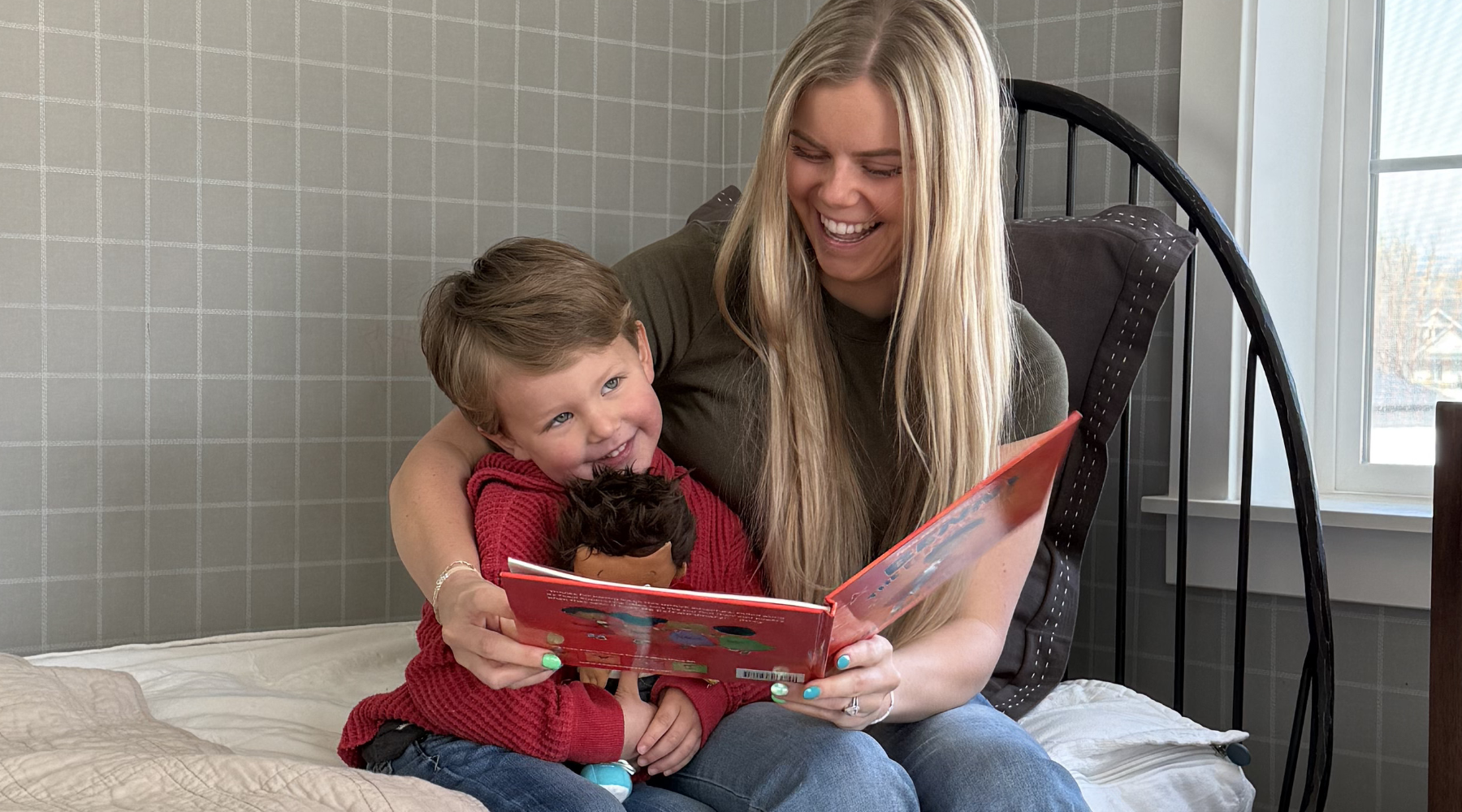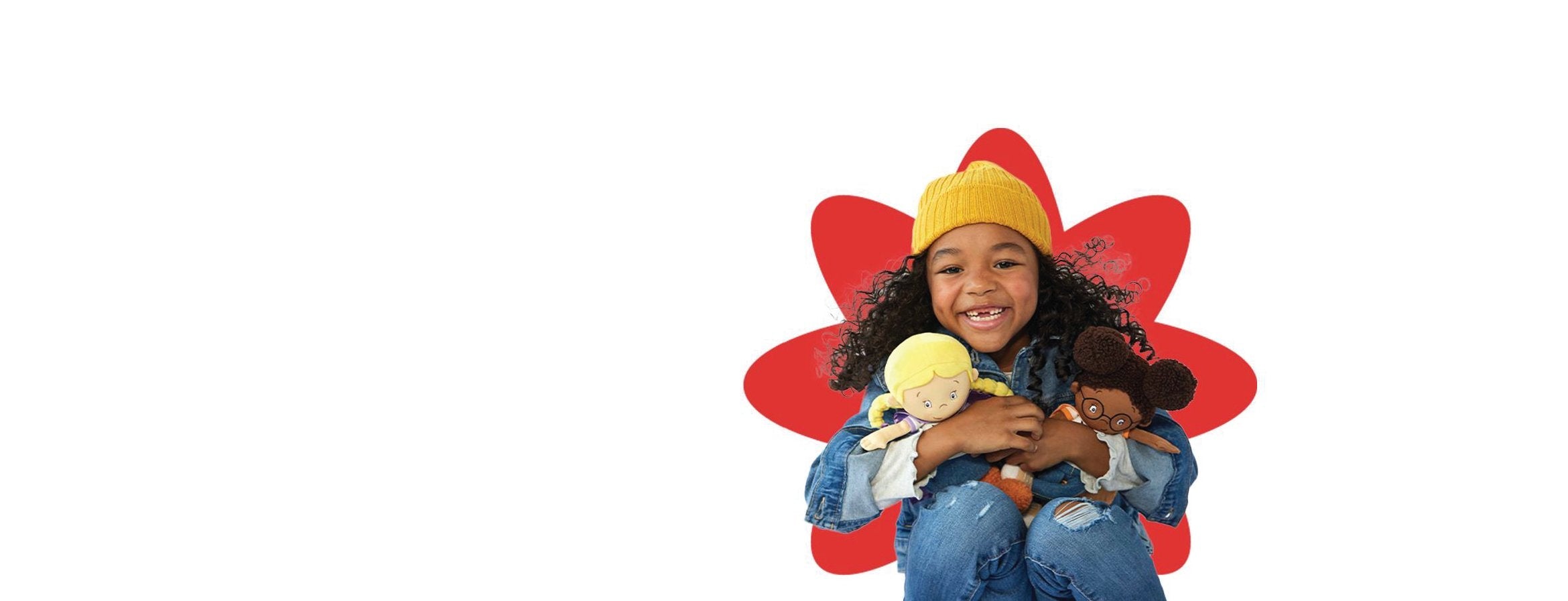By Eli Mast, LMFT
Guiding a child through big change isn’t about making it easy — it’s about making it safe.
Change can be exciting, but it often brings big feelings, such as fear, uncertainty, or frustration. As adults, we spend a lot of time in the logical part of our brain, the prefrontal cortex, which helps us problem-solve. But the part of the brain that handles emotions — the amygdala — is small, reactive, and hard to control, especially for young children. When change disrupts what they expect, kids don’t need quick solutions. They need safety, connection, and time to adjust.
As a mother of twin toddlers, I see firsthand how change affects each of my girls differently. One of them walks into Costco waving at every person she sees. The other won’t say a word until we’re in line to check out. Both are brave in their own ways. And no matter how much early childhood mental health training I have, my kids still have big feelings, especially when something new or unexpected happens.
Real Life Doesn’t Pause for Smooth Transitions
As I was preparing to write about change, our own family was right in the middle of it. My husband and I had new work schedules. Wake-up times shifted. Our bedtime routine wasn’t clicking. Then came something we were actually looking forward to — my daughters’ first dance recital.
We had been taking ballet and tap for five months and decided to let the girls participate in a recital showcase. We wanted to introduce them to the experience of being onstage, not for performance perfection, but for the chance to try something new and fun.
But that kind of event comes with a lot of novelty: a new location, new people, a backstage full of noise and activity, and an excited audience. Every week at class, I talked about how we’d be dancing on stage, and how Grandma and Papa would be there. I wanted to help them feel prepared, not surprised.
We had a rehearsal a few days before the performance and I thought of it as the perfect chance to show them what it all might look and feel like. But life happened. I had to fly to Arkansas unexpectedly to be with my dad in the hospital, and I missed the rehearsal. My sister stepped in, but she didn’t have the same relationship with my girls, especially Lana, who is slower to warm in new situations.
Lana cried most of the time. She told my sister “No, Titi, no.” Out of nine dances, she stood on stage for just two. But more than anything, she looked scared. She didn’t feel safe — and I wasn’t there to co-regulate with her, to be her anchor in a sea of change.
Helping Kids Feel Safe in New Environments
When I got home, I knew I wanted to give Lana another shot at the performance — not to push her, but to rebuild her sense of safety. For kids, feeling safe isn’t just about physical security. It’s about relationships. It’s about being understood and supported through the unknown.
We talked about her experience. We named the feelings: scared, sad, overwhelmed. We didn’t try to make them go away — we gave them space. Then we started talking about bravery.
We read our Benny the Brave story and talked about what it means to do something new even when you’re nervous. We named moments when Lana had already been brave — like jumping off a curb or holding a rolly polly bug. I introduced her to the Brave Badge, and gave her the choice to use it whenever she needed a little courage.
Over the next two days, the girls picked badges for all kinds of feelings: Brave, Calm, Grit, Kind. Sometimes it matched the moment, sometimes it was just about which color or character they liked. Either way, they were choosing ways to feel safe, and build readiness for what was coming.
The Day of the Recital
This time, I was backstage. Our goal was simple: keep it stress-free. That meant slowing down, checking in emotionally, and making sure Lana had what she needed to feel grounded.
We weren’t the most efficient — we took our time getting dressed, walked ourselves up the stage steps, and skipped any rushed cues. I helped with their shoes instead of letting someone else do it. We walked off the stage a few times when we felt done, but we went on stage every time. We waved at Grandma and Papa. We danced sometimes. And we felt brave and safe.
She transformed that first experience — the one full of fear and stress — into something safe and joyful. And now, “Lana Brave” is something we hear often. When she shares a toy with Lucy. When she high-fives her new soccer coach, because we are taking a break from dance. Or when she sits on a carousel horse instead of the bench.
Change Will Keep Coming
Whether it’s a new sibling, a new school, a different routine, or just trying something unfamiliar, change will always be a part of our children’s lives. And it will almost always come with big feelings — excited ones, scared ones, and everything in between.
The goal isn’t to make change easy. It’s to make it feel safe enough to explore.
When we give kids the language to name their feelings, the tools to navigate them, and the support of someone who understands, they don’t just survive change — they grow from it.
Because being brave doesn’t mean you’re not scared.
It means you show up anyway, with someone who believes in you.








